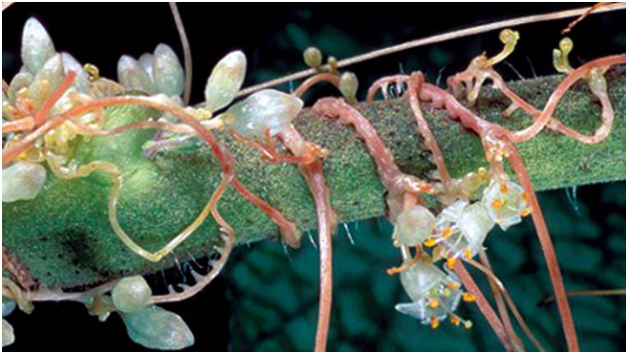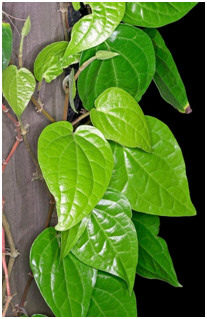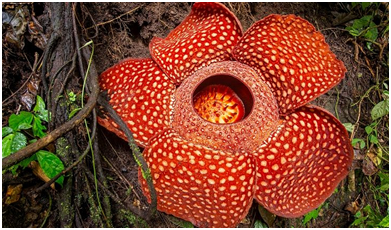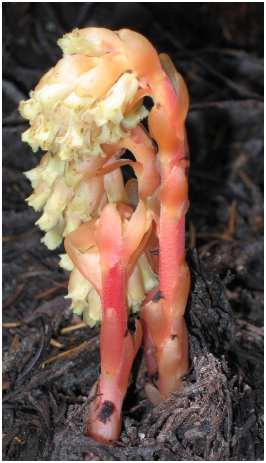The Great Banyan Tree is over 250 years old and covers about 14,500 square meters of land (3.5 acres) in the Acharya Jagadish Chandra Bose Botanical Garden near Kolkata (Calcutta), making it the widest tree in the world. From a distance, the tree has the appearance of a forest, but what appear to be individual trees are actually aerial roots- around 3,000 of them. These aerial roots are called:
1. Haustoria
2. Pneumatophores
3. Prop roots
4. Climbing roots

2. Pneumatophores
3. Prop roots
4. Climbing roots

The flower shown in the picture is actinomorphic, with 3+3 tepals, 3+3 stamens and a superior ovary consisting of three fused carpels. This flower belongs to the family:
| 1. Liliaceae 2. Fabaceae 3. Solanaceae 4. Brassicaceae |
 |
The pointed structures seen emerging from ground in the given picture are called:
| 1. Pneumatophores 2. Haustoria 3. Assimilatory roots 4. Stilt roots |
 |
Stilt roots shown in the given picture is seen in:

1. Rhizophora
2. Pandanus
3. Betel
4. Tinospora
The spiral structures coiling around a stem in the given picture can belong to:

1. Dodder
2. Mistletoe
3. Broomrape
4. Sandalwood
The picture shows the betel plant which is a:

1. Hook climber
2. Rootlet climber
3. Tendril climber
4. Leaf climber
The picture shows the largest flower of Rafflesia which is a:

1. Total stem parasite
2. Partial stem parasite
3. Total root parasite
4. Partial root parasite
The picture shows the Monotrapa plant. It is a/an:

1. Insectivore
2. Saprotroph
3. Root parasite
4. Stem parasite
Match each item in COLUMN I with one in COLUMN II and select the correct answer from the codes given:
|
|
COLUMN I [Elongated nodes in thalamus] |
|
COLUMN II [Example] |
|
A. |
Anthophore |
a. |
Gynandropsis |
|
B. |
Androphore |
b. |
Silene |
|
C. |
Gynophore |
c. |
Passion flower |
|
D. |
Gynandrophore |
d. |
Capparis |
Codes
A B C D
1. b c d a
2. b d a c
3. c b a d
4. d c b a
In the given diagram the floral features are seen in the members of Family:
1. Liliaceae
2. Solanaceae
3. Fabaceae
4. Brassicaceae







